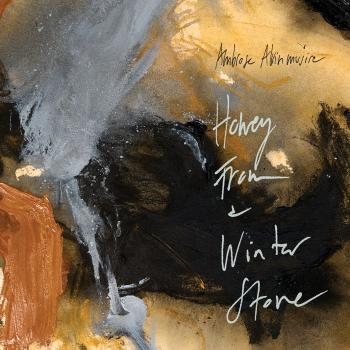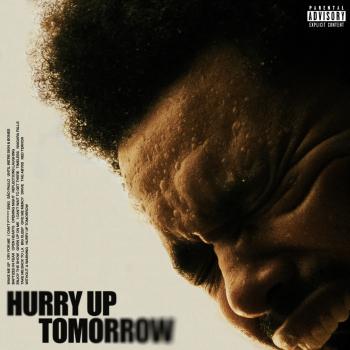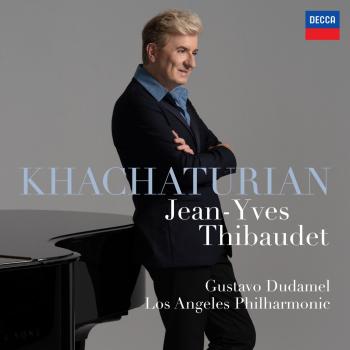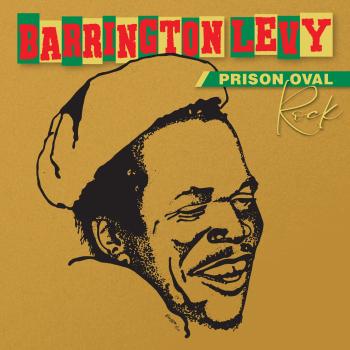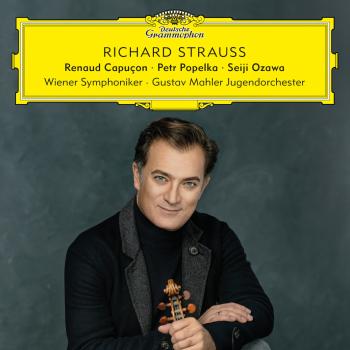Rigmor Gustafsson & Nils Landgren
Biography Rigmor Gustafsson & Nils Landgren
Rigmor Gustafsson,
geboren und aufgewachsen ist sie auf einem kleinen Bauernhof im Värmland, im Herzen Schwedens. Mit neun Jahren begann sie, Gitarre zu spielen und entdeckte schon früh den Jazz für sich. Bald wurde ihr klar, dass sie diese Leidenschaft zu ihrem Beruf machen wollte. Doch wer lässt schon ein Mädchen an der Gitarre in seiner Band mitspielen? Sie hatte eine wundervolle Stimme und so hängte sie die Gitarre an den Nagel und wechselte ins Gesangsfach.
Nach ihrer Ausbildung an der Royal Academy of Music in Stockholm machte sie sich sehr rasch in der schwedischen Szene als ausgezeichnete Vokalistin einen Namen. Sie arbeitete mit verschiedenen Big-Bands, leitete kleinere Jazzformationen, trat im schwedischen Fernsehen auf und machte zahlreiche Radioeinspielungen.
1993 zog es sie nach New York, um an der New School und am Mannes College of Music bei Sheila Jordan, Clark Terry, Richie Beirach, Phil Markovitz, Reggie Workman und Joe Chambers zu studieren. Sie trat mit Fred Hersch und Ted Rosenthal in den einschlägigen New Yorker Clubs auf, machte Aufnahmen mit Randy Brecker, Bob Mintzer und Dick Oatts und unterrichte bald selbst am Mannes College of Music. Sie gründete ihr erstes Quintett und tourte mit ihm quer durch Europa.
1996 kehrte Rigmor nach Stockholm zurück, erhielt einen Lehrauftrag als Gesangsdozentin an der Royal Academy of Music und galt seither als Star der jungen, vitalen Jazzszene.
In Deutschland zog ihr gefeierter Auftritt beim JazzFest Berlin 2001 eine Einladung zum JazzBaltica Festival 2002 nach sich, auf dem sie sich einem größeren deutschen Publikum als „ein neuer Stern am Gesangshimmel“ (Jazzthetik) vorstellen konnte. Im selben Jahr war sie als Gast auf Nils Landgrens Erfolgsalbum Sentimental Journey (ACT 9409-2) zu hören und 2003 stellte sie dann mit ihrem ACT-Debüt I WILL WAIT FOR YOUI WILL WAIT FOR YOU schnellte sofort auf #2 der deutschen und #1 der schwedischen Jazz-Charts und verdrängte in Schweden immerhin Norah Jones von dieser Position, die die Amerikanerin 74 Wochen lang gehalten hatte. Der German Jazz Award manifestierte den Erfolg dieses von Nils Landgren produzierten Albums.
Im folgenden Jahr veröffentlichte Gustafsson gemeinsam mit dem frankoamerikanischen Pianisten Jacky Terrasson eine hinreißend sinnliche Hommage an eine der größten Sängerinnen der Popkultur, Dionne Warwick: CLOSE TO YOU (ACT 9703-2). Selten stand Pop-Songs ein Jazzgewand so gut. Wie angegossen passen die neuen Sound-Kleider den souligen Klassikern, die dabei ihre Identität als Pop-Songs wahren und dennoch zu spannendem, aktuellem Jazz geworden sind. Gustafsson wurde dafür nicht nur mit einem schwedischen Jazz Award belohnt, sondern von Werner Burkhardt in der Jahresbilanz der Süddeutschen Zeitung auch zur „Besten Interpretin des Jahres“ gekürt.
Auf ihrem nächsten Album ON MY WAY TO YOU (ACT 9710-2) (erschienen im Februar 2006) interpretierte Gustafsson mit großem Jazzfeeling die weltweit erfolgreichen Filmmelodien des 1932 in Paris geborenen Komponisten Michel Legrand. Manche seiner Melodien ("Windmills of Your Mind", "Once upon a Summertime", "You Must Believe in Spring" ...) gehören zum populären musikalischen Welterbe und Gustafsson erwies sich unter der Regie von Nils Landgren als eine Ideal-Interpretin für diese Songs – auch in den Augen von Michel Legrand selbst: "Ich fühle mich sehr geehrt, dass Rigmor einige meiner Songs interpretiert. Sie ist einfach umwerfend". Mit ON MY WAY TO YOU erreichte Gustafsson sogar #12 der schwedischen POP Charts und das Album wurde in ihrer Heimat mit Gold ausgezeichnet.
Ihre aktuelle, vierte Einspielung für ACT ALONE WITH YOU (ACT 9717-2), Veröffentlichung im September 2007) ist eine Art Premiere. Denn obwohl Gutafsson seit Jahren komponiert und auch die meisten Texte dazu selbst verfasst, kennt man sie bislang vor allem als hervorragende und einfühlsame Interpretin der Songs anderer Komponisten. Nun aber ist sie einen Schritt weiter gegangen und hat ein sehr persönliches Album zusammengestellt, das ausschließlich Stücke aus ihrer eigenen Feder enthält.
„Ihre Seele spricht zu anderen Seelen“, schrieb Werner Burkhardt vor ein paar Jahren in der Süddeutschen Zeitung über ihren Auftritt bei der JazzBaltica – und besser kann man ihren Gesang und ihre Persönlichkeit kaum charakterisieren.
Nils Landgren
Für die Worte Vielseitigkeit, Neugier und Arbeitseifer gibt es ein Synonym: Nils Landgren. Einst galt James Brown als „hardest working man in showbusiness“ – vererbt zu haben scheint der Funk-Gott diesen Titel an einen munter in der Welt umherziehenden Schweden mit knallroter Posaune. Virtuos schwingt sich „Mr. Red Horn“ von Perspektive zu Perspektive, auch, weil er den ständigen Wechsel braucht. Auf mirakulöse Weise teilt sich der 55jährige Nils Landgren seine Zeit auf: Wenn er nicht mit seiner „Funk Unit“ oder anderen Projekten unter eigenem Namen tourt, ist er als Produzent oder Talentscout gefragt. Er vermittelt sein Knowhow an Studenten in Hamburg und Shanghai, berät die NDR Big Band (der er für mehrere Jahre auch als Musiker diente) in künstlerischen Dingen, steht der vielseitigen schwedischen Bohuslän Big Band vor (zuletzt zusammen mit Arrangeur Colin Towns auf „Don’t Fence me in – the Music of Cole Porter“ ACT 9028-2) und stellte in zwei Amtszeiten als künstlerischer Leiter das Programm des JazzFest Berlin zusammen (bis 2011). Nils Landgren sagt: „Selbst wenn ich mich nicht langweile, ist es gut für mich, mehrere Dinge anzugehen – damit ich verschiedene Blickwinkel einnehmen kann. Denn die bewirken, dass sich die Art meines Singens und Posaune-Spielens ändert. Davon profitiert auch mein Publikum.“
Für die, die ihm musikalisch seit Jahren die Treue halten, wird es nie langweilig. Sie bekommen es bei Nils Landgren mit einem Mann zu tun, der sich der reichen Folklore-Tradition seines Landes genauso verpflichtet fühlt wie dem bisher Ungehörten. Sie lauschen einem Idealisten, der die Grenzen zwischen den Genres ignoriert, der auf eigenen Werken mit Musikern wie Maceo Parker, Colin Towns, den Brecker Brothers, Airto Moreira, Till Brönner, Roy Hargrove, Fred Wesley, Steve Gadd, Richard Galliano, Michael Wollny, Joao Bosco, Benny Anderson (von ABBA), Viktoria Tolstoy, Joe Sample, Ray Parker Jr., Eddie Harris oder Esbjörn Svensson gemeinsame Sache machte und so seinen Horizont ständig erweiterte.
Gleich zwei Seelen wohnen, in seiner Brust: Wenn ihn das Publikum mit seiner „Funk Unit“ erlebt, zeigt sich der Schwede von seiner männlich-markanten, unablässig groovenden Seite und gibt den Jazz-Action-Held. Aber es gibt eben auch einen ganz zarten, melancholischen, hoch sentimentalen Nils Landgren. Der zeigt sich etwa in der Adventszeit, wenn der Instrumentalist und Sänger „Christmas With My Friends“ feiert – oder auf Balladen-Alben wie seinem aktuellen „The Moon, The Stars And You“ (ACT 9505-2), sowie „Ballads“ (ACT 9268-2) und „Sentimental Journey“ (9409-2) – da intoniert er auf der Posaune mit vergleichsloser Geschmeidigkeit und seine so eigentümlich belegte, fragile Stimme berührt mit ihrer Empfindsamkeit das Herz und die Seele.
Früh ist er zur Musik gekommen. Als Sechsjähriger, Alptraum aller Eltern, begann er Schlagzeug zu spielen. Mit 13 fand der 1956 in Degerfors, Värmland, im Sternzeichen Wassermann geborene Nils Landgren dann seine Bestimmung: Er wechselte an die Posaune. Zwischen 1972 und 1978 erarbeitete sich an verschiedenen Lehranstalten eine gesunde klassische Basis. Die erworbenen technischen Fertigkeiten am Zug-Instrument setzte er bald schon in ganz anderen musikalischen Gefilden ein: Begegnungen mit dem Folk-Jazz Pionier Bengt-Arne Wallin und dem Posaunisten Eje Thelin beschleunigten seinen musikalischen Richtungswechsel. Auch ein Ortswechsel stand an: Nils Landgren zog nach Stockholm und wurde dort binnen kurzer Zeit zum Mann für alle Fälle, zum Unikum, das sich in fast jedem stilistischen Umfeld hervortat, zum Studiocrack. Schweißperlen standen ihm auf der Stirn, als er 1981 als Lead-Posaunist für das „Ball of Fire“-Projekt des legendären Thad Jones engagiert wurde. „Nach dem ersten Abend wollte ich nur noch nach Hause“, lacht Landgren. Doch Herausforderungen wie die mit Jones haben aus ihm einen vollkommenen Musiker gemacht, einen, der heute keine Angst vor neuen Aufgaben zeigt. Nur her damit.
Fast dreißig Jahre währt die Solo-Karriere des Mannes nun schon, der musikalisch wie konditionell stets an seine Grenzen geht – und darüber hinaus. Nils Landgrens Debüt „Planet Rock“ von 1983 markiert den Anfangspunkt einer stolzen Diskografie - angefüllt mit Projekten, die unterschiedlicher kaum ausfallen könnten: Man nehme nur die Duo-Einspielungen „Layers of Light“ (ACT 9281-2) und „Swedish Folk Modern“ (ACT 9428-2) mit dem tragisch früh verstorbenen Pianisten Esbjörn Svensson: Da, oder auch auf dem Album „Gotland“ (ACT 9226-2), offenbart sich ein heimatverbundener Nils Landgren, der sich durch die mystischen Klangwelten Skandinaviens bewegt, ins Ätherische wegdriftet, ins Unfassbare . In „Salzau Music On The Water“ (ACT 9445-2) traf er sich mit dem Vibrafonisten Christopher Dell und dem Bassisten Lars Danielsson auf einem Steg, abseits von Schloss Salzau und spielte entrückte Klänge in die Zeit hinein, in der die Nacht sich schlafen legt und der junge Morgen noch gähnt. Ganz eins mit der Natur waren die drei Musiker bei der Aufnahme.
Derselbe Nils Landgren kommt aber auch schnell wieder auf den Boden, down to earth, um den weltbekannten Landsleuten von ABBA etwa mit „Funky ABBA“ (ACT 9430-2) eine Referenz zu erweisen oder Cannonball Adderley zu ehren – so geschehen mit dem Album „Paint it Blue“ (ACT 9243-2) seiner vielfach prämierten Gruppe „Funk Unit“, die bei ihrer Gründung noch schlicht „Unit“ hieß. Anlässlich des JazzBaltica Festivals, das für Nils Landgren 1994 wohl zum internationalen Durchbruch führte, taufte er sie zum heute bekannten Namen um. Diese Band tut übrigens nicht nur musikalisch Gutes – das Album „Funk For Life“ (9500-2) unterstützte in Kooperation mit „Ärzte ohne Grenzen“ ein Projekt zur musikalischen Förderung von Kindern und Jugendlichen in „Kibera“, einem der größten Slums in Kenias Hauptstadt Nairobi. Ein Euro pro verkaufter CD wurde für den wohltätigen Zweck abgezweigt.
Mit seinem aktuellen, am 26. August 2011 erscheinenden Album „The Moon, the Stars and You“ (ACT 9505-2) zeigt sich Nils Landgren erneut von seiner sensiblen, zerbrechlichen Seite. Das Balladenalbum ist eine Weiterführung von „Sentimental Journey“ – einem der erfolgreichsten Alben aus Nils Landgren’s Karriere. Zusammen mit Pianist Michael Wollny, Bassist Lars Danielsson und hochkarätigen Gästen wie Richard Galliano, Steve Gadd, Joe Sample, Joao Bosco, Cæcilie Norby, dem Stockholm Philharmonic Orchestra und der NDR Big Band interpretiert Nils Landgren Jazzstandards, Folk und Pop und natürlich auch zahlreiche Eigenkompositionen - nachdenklich gestimmt, sehnsuchtsvoll, vereinzelt funky und aufbrausend, doch stets inspiriert und swingend.
Was lässt sich Nils Landgren wohl als nächstes einfallen, wo treibt es ihn musikalisch, künstlerisch hin? Welche Hürde glaubt er noch nicht überwunden zu haben? Der schwedische Alleskönner hat sich schon so oft in den unterschiedlichsten Bereichen bewiesen, dass man ihm alles und noch mehr zutraut. Fakt ist: Seine größte Schwäche dürfte zugleich auch seine größte Stärke sein: Eines kann Nils Landgren ganz schlecht: Nein sagen.



